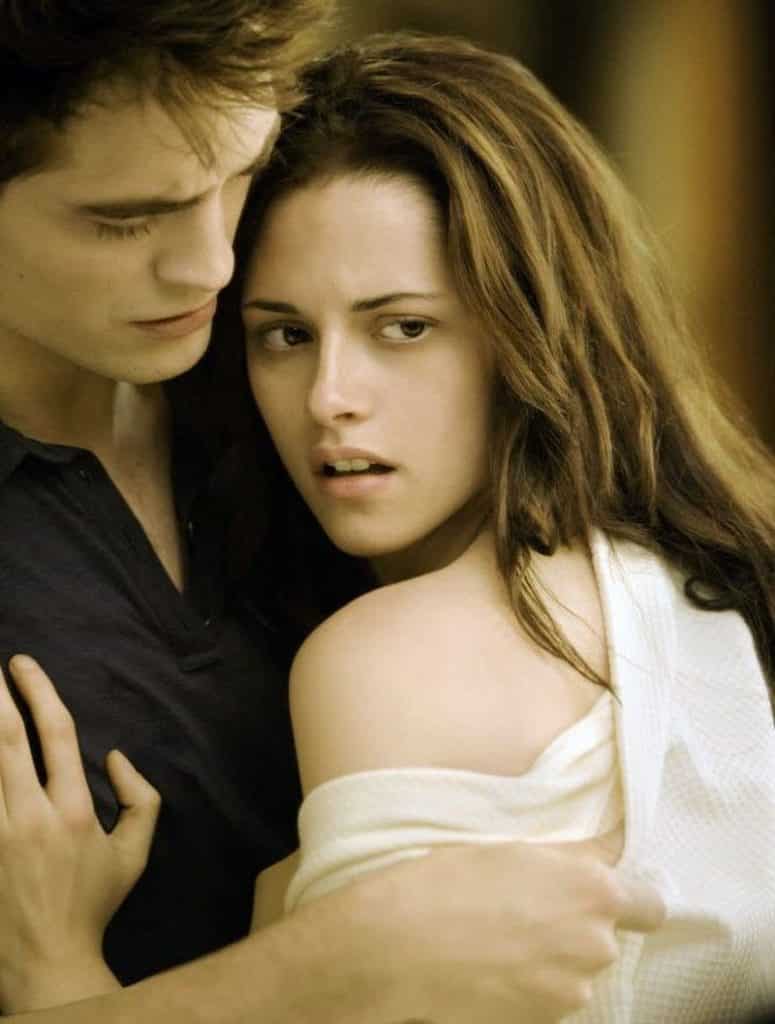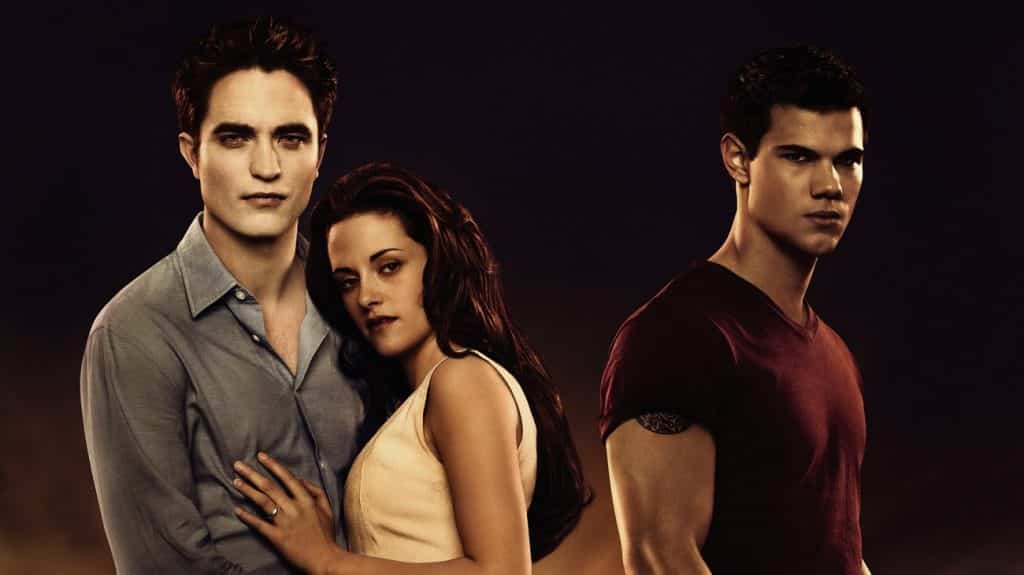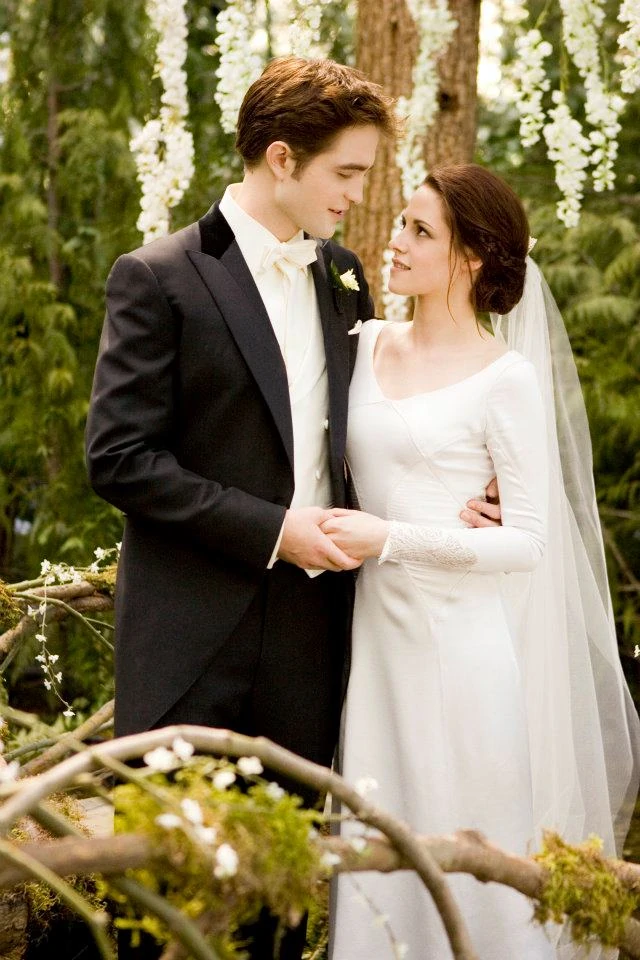These novels have many of the components of an adult romance novel. It starts with the unlikely pairing, the love triangle, and the obstacle that must be overcome. This causes an obstacle to overcome, giving the story an arc outside of the one that involves danger. Part of the attraction of the Twilight series is that someone as beautiful as Edward Cullen could love a normal, clumsy girl like Bella Swan.
Bella states, time and again, how uncoordinated she is “Perhaps it was my crippling clumsiness was seen as endearing rather than pathetic. Casting me as the damsel in distress” (Meyer, 2005, p. 55). This highlights the desire that there is something inherently special deep inside of all of us that can attract a supernatural partner. This is problematic in that Bella isn’t really accepting responsibility for her actions.
She is waiting for Edward to see the “inner beauty” that she has. For young girls dealing with the problems of adolescence, the thought that someone can spot the “diamond in the rough” that they are is very appealing. They are in the throws of growth spurts, fighting acne, and being constantly bombarded with images of “Photoshopped” models and actresses in magazines. For all of her strengths, Bella fits the classic damsel in distress parameters.
The first instance of the classic “damsel in distress is when Edward rescues her when there is a car skidding out of control and threatening to crush her while they are both outside of Fork High School. “Two long, white hands shot out protectively in front of me, and the van shuddered to a stop a foot from my face, the large hands fitting providentially into a deep dent in the side of the vans body.” (Meyer, 2005, p. 56)
He risks exposure by rushing over at superhuman speed to push her out of the way. When Bella questions what she sees, he says that she hit her head. But our little protagonist doesn’t give up. She continues to question him until he tells her that he is a vampire. She follows her gut and makes a choice to continue her questioning, standing up for herself in a very small way. The second time he comes to her rescue is when there is another vampire, James, who lusts after her blood. This later comes out that she has very special blood.
That blood has to do with her “gift” later in the series. James treats hunting Bella as a game, not knowing that Bella is immune from the vampire powers that have thus far been tried out on her, again because she is special. “ Listen to me, Alice, I saw his mind. Tracking is his passion, his obsession- and he wants her, Alice her; specifically. He begins the hunt tonight.” (Myer, 2005, p 382) At this point, our Bella, who by all accounts is an “ordinary” girl, is garnering attention everywhere she goes – both positive and negative.
The hero, Edward, continues to save the day. Using his strength and speed to kill James and protect Bella. This is the classic damsel in distress category that is a popular in several varieties in romance novels. The hero of the tale will come and save the day, absolving the heroine from any responsibility for her actions. There have been arguments on both sides of the fence regarding the choices that Bella makes. Is she a feminist, or a victim of domestic abuse? She chooses after only a short while that she wants to become a vampire. At the tender age of seventeen, she is ready to leave the world of the living to join the sparkling (literally, as the Cullen’s skin sparkles in the sunlight) eternity that the Cullens have to offer.
Special gifts
It later comes to light that Bella is what they call a telepathic void, meaning that a vampire can’t overpower her with mind control – a trick that works on all other human. This is very similar to the popular romance series by Charlaine Harris called “The Southern Vampire Chronicles” or, as TV viewers know it, True Blood. This is an extremely popular romance series and, with Twilight coming to an end after four books, it has picked up a large teen following looking to continue reading books about the romance between a human and a vampire.
The main female lead in the southern vampire chronicles series is Sookie Stackhouse. She is a telepathic waitress from Bon Temps, Louisiana. Later in the series, it is made known that she is one-quarter fairy, and that is how she obtained her telepathic powers. This again reinforces the idea that there is something special about each of us, waiting for a hunky vampire to come and shed light upon. But this gift is passive, meaning that the heroine doesn’t have to do anything to have this gift. It’s not something that they had to work for or earn.
What youngster hasn’t day dreamed that they possessed some secret power that separates them from mere mortals? Having a special power is the center point of almost every comic book every written – that there is something superhuman that we possess that makes us special, but yet we don’t have to work too hard to obtain.
The Love Triangle
The pull of young love is great. In her school, Bella Swan captures the attention of the majority of the male-student body. To make for a more dynamic story, she must choose between vampire and werewolf. Both are beautiful and slightly flawed. Convinced that his love is so great he will overcome his nature to be with her, Bella chooses the bad boy—more true to the genre. Another parallel seen with Sookie Stackhouse who is also the main love interest of both Bill Compton, a vampire and civil war veteran possessing the demeanor of a southern gentleman, and shrewd, businessman Eric Northman who was brought across in the age of Vikings.
The love triangle—another parallel between romance novels and young adult literature. What young girl wouldn’t dream of having multiple suitors vying for her attention? In the Twilight series, Bella is pursued both by Edward Cullen, the broodingly handsome vampire, and Jacob Black, the Werewolf with a strong animal magnetism. These triangles allow readers to feel the tension between these opposites. Jacob is in some way still human, and his family has ties with hers.
He is, by all accounts, the good guy. He cares for Bella as strongly as Edward does, and she wouldn’t have to give up her mortality for them to be together. But, in any popular narrative, what heroine chooses the good guy? They will pick the tortured soul every time, erroneously thinking that their love will change them.
A common love triangle formula is one in which the hero (or heroine) is torn between two suitors of radically contrasting personalities; one of a girl next door or nice guy type, and the other as a physically attractive but potentially hazardous person. Alternatively, the hero or heroine has a choice between a seemingly perfect lover and an imperfect but endearing person. In this case, significant flaws are revealed within the too-good-to-be-true person—hidden insensitivity or lecherousness. Their ruse can make the other person look more desirable.
Bella, our Twilight heroine, is torn between Edward—whose flaw is a lack of confidence in self-control—and Jacob, the sweet werewolf she has known since childhood. What teen girl doesn’t love a bad boy? The draw is that he loves her so much that he sustains his self-control. The hook is that true love endures everything and that Bella compromises everything to be like the Cullens.
However, there is an extreme, problematic force in that statistics show, now more than ever, that many young girls are victims of abuse. “Women ages 16 to 24 experience the highest per capita rates of intimate violence – nearly 20 per 1000 women” (Bureau of Justice Special Report: Intimate Partner violence, May 2000). At this point in the series, Edward and Bella had only been together for a few months, but she feels like this is the choice she wants to make. She is giving up her family and friends and the only life that she has known to be with Edward for eternity. “ Mostly I dream about being with you forever” (Myer, 2005. p. 489).
Teenagers and Budding Sexuality
Teenagers are controlled by raging hormones and are in a state of growth—pubescence. They view the world in black and white, and the bond of first love is very powerful. Twilight’s Mormon author adheres to a strict, religious, and moral code giving this story a slightly different twist “Meyer finds a way to endorse celibacy, thus maintaining notions of purity, without trivializing adolescent sexual desires” (Kokkoloa, 2010, p.169). Bella and Edward abstain from pre-marital sex.
In the books, it is that “Edward insists on taking her back to the morals of his Edwardian childhood and marrying her before he will agree to have sex” (Kokkoloa, 2010, p.169). Their intimacy is very limited by Edward’s strong desire to drink Bella’s blood. Said conflict is somewhat out of step with other supernatural series that target older audiences who go for the sexual aspects of the romance novel.
Along the lines of teen angst, Bella believes she has found true love at the young age of seventeen. In keeping with the tortured yet generous-hearted ghoul, Edward resists temptation and, insists they be married before consummating their relationship “Edward is the perfect socialized young adult: he desires both Bella’s blood and her body, but he can control himself. He responds with gentlemanly grace to Bella’s inability to control her lust” (Kokkoloa, 2010, p.166).
Resources
BBC News. (2002).“Satanic” Harry Potter books burnt. http://news.bbc.co.uk/hi/english/entertainmnet/arts/ewsid_1735000/1735623.stm
Benedetti, A. (2011). Not just for teens. Library Journal, 136(11), 40.
Bureau of Justice Statistics. (2000) Intimate Partner Violence in the United States [Data File] Retrieved from http://bjs.ojp.usdoj.gov/content/intimate/ipv.cfm
Burkhart, Nancy W,R.D.H., EdD. (2010). Oh my! Vampires and Werewolves. RDH, (02797720), 80-83. Retrieved from http://search.proquest.com/docview/751974885?a
Butler, R. (2003). The literature continuum: The Harry potter phenomenon. School Libraries Worldwide, 9(1), 64-77.
Crawford, P. C. (2008). A new era of gothic horror. School Library Journal, 54(10), 32-n/a. Retrieved from http://search.proquest.com/docview/211830934?accountid=10043
De Marco, J. (1997). Vampire literature: Something Young Adults Can Really Sink Their Teeth Into. Emergency Librarian, 24(5), 26-28.
Freitas, D. (2008). The Next Dead Thing. Publishers Weekly, 255(46), 23-25.
Hulsey, T. L. (2010). ‘Monstrous’ Developments on Campus. Phi Kappa Phi Forum,90(3),22.
Internet Movie Database Dracula retrieved from http://www.imdb.com/title/tt0103874/
Kokkola, L. (2011). Virtuous vampires and voluptuous vamps: Romance conventions reconsidered in Stephenie Meyer’s ‘twilight’ series. Children’s Literature in Education, 42(2), 165-179.
Melton, G. (2011) The Vampire Book the encyclopedia of the undead Detroit: Visible Ink Press
Moretti, F. (1982). The Dialectic of Fear. New Left Review, 136, 67-85.
Myer, S. (2005). Twilight New York: Little, Brown and Company.
Richards, C. (2004). What Are We? Adolescence, Sex and Intimacy in Buffy the Vampire Slayer. Continuum: Journal Of Media & Cultural Studies, 18(1), 121-137.
Robillard, C. (2009). Hopelessly Devoted: What Twilight Reveals about Love and Obsession The Alan Review Volume 37 Issue 1 retrieved from http://scholar.lib.vt.edu/ejournals/ALAN/v37n1/robillard.html
Rosenberg, A. (2011). From ‘Harry Potter’ to ‘Twilight’ the Enduring Draw of Young Adult Fiction, The Atlantic. Retrieved from http://www.theatlantic.com/entertainment/archive/2011/05/from-harry-potter-to-twilight-the-enduring-draw-of-young-adult-fiction/239639/
Rosenberg, L. (2009). Where the Cool Kids are, Like, Undead The Boston Globe retrieved from
http://www.boston.com/ae/books/articles/2009/06/28/young_adults_feel_affinity_with_supernatural_characters_in_books/
Slawson, J. (2006). Harry Potter Books as Indexes of American Culture. Journal Of American Culture, 29(1), 72-73. doi:10.1111/j.1542-734X.2006.00288.x
Tayor, A. (2012). The Urge Towards Love is an Urge Towards (un)death: Romance, masochistic desire and post-feminism in the Twilight novels International Journal of Cultural Studies vol. 15 no. 1 31-46, doi: 10.1177/1367877911399204
Terry, N., King, R. , & Patterson, R. (2011). Vampires, slashers, or zombies: Opening weekend’s favorite box office monster. Journal of Business & Economics Research, 9(2), 95-105.
Wilson, N. (2011) Seduced by Twilight The Allure and Contradictory Messages of the Popular Saga [Adobe Reader Version] Retrieved from http://reader.eblib.com.libaccess.sjlibrary.org/(S(4ufzztmxn4vkjrgah33m50gn))/Reader.aspx#



